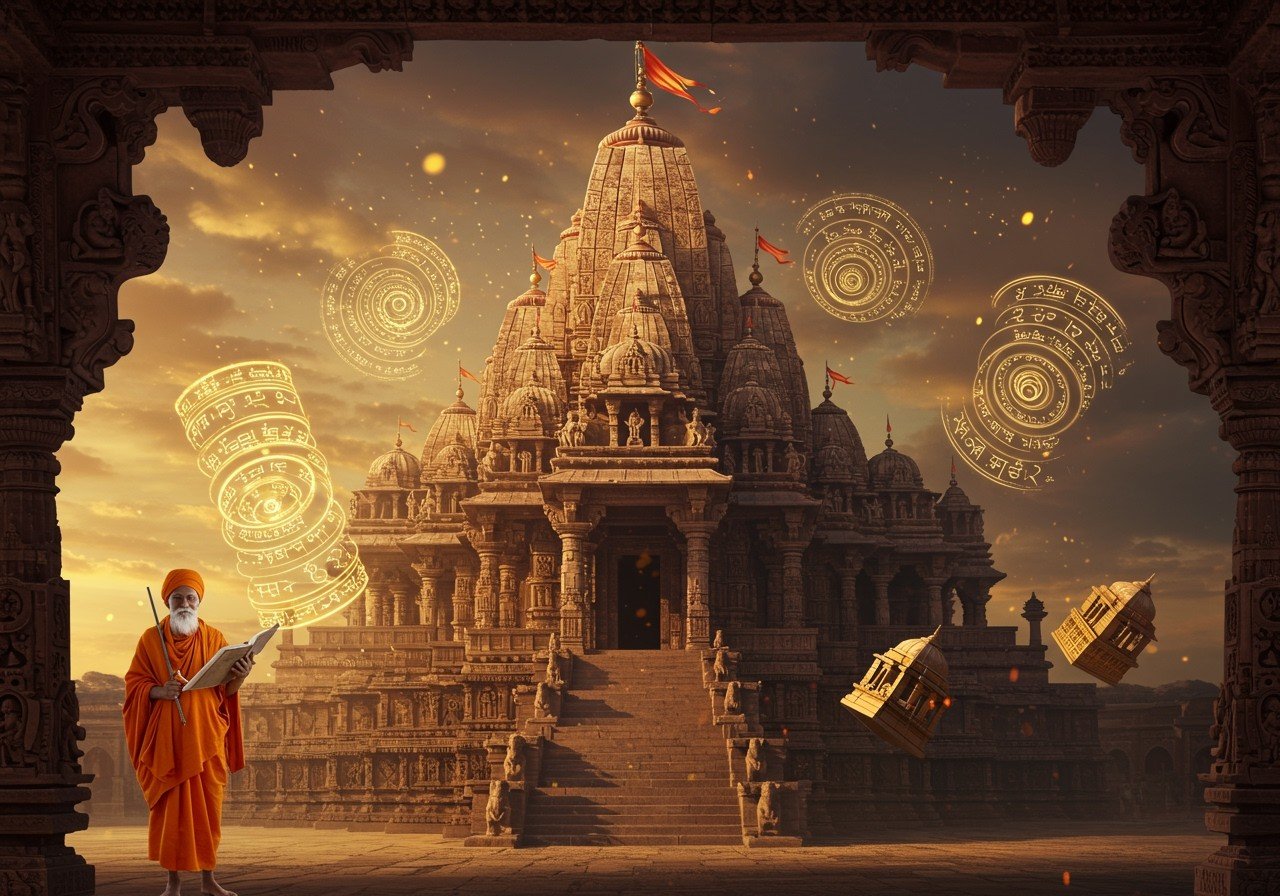
Ancient Indian architecture, a captivating tapestry of styles and traditions, reflects India’s rich history, culture, and spirituality. This architectural heritage showcases a remarkable blend of artistic expression, religious beliefs, and engineering ingenuity, spanning millennia and encompassing various dynasties. Poojn.in invites you to delve into this fascinating world, where artistry and devotion intertwine.
Early structures, primarily constructed from wood and brick, have largely vanished due to the passage of time, climatic conditions, and repurposing of materials. However, the earliest surviving examples, showcasing the resilience and artistry of rock-cut architecture, offer a glimpse into the past. These include breathtaking Buddhist, Hindu, and Jain temples, carved into the very heart of mountainsides.
Key features of ancient Indian architecture include:
- Intricate carvings: Ancient Indian artisans adorned temples and other structures with elaborate carvings, depicting deities, mythological scenes, and intricate patterns. These carvings showcase the skill and devotion of the craftsmen, transforming stone into breathtaking works of art. They often narrate stories, symbolize spiritual concepts, and serve as a visual testament to the rich cultural and religious beliefs of the time.
- Rock-cut caves: Hewn from solid rock, these caves served as sanctuaries, monasteries, and temples. The Ajanta and Ellora Caves exemplify the magnificence of rock-cut architecture, showcasing the dedication and artistry involved in creating these awe-inspiring spaces. They provided a sheltered environment for spiritual practices and artistic expression, leaving behind a legacy that continues to inspire.
- Grand temples: Ancient Indian temples, majestic in scale and intricate in design, stand as testaments to architectural prowess and spiritual devotion. These structures, often dedicated to various deities, served as centers of worship and community life, playing a crucial role in shaping the cultural landscape of ancient India. Their towering gopurams and intricate mandapas showcase the architectural grandeur of the era.
Development and Styles
Indian architecture has evolved over centuries, exhibiting regional variations and distinct styles. Some prominent styles include:
- Nagara: This North Indian temple style, characterized by its curvilinear shikharas (towers), embodies a sense of upward movement, reaching towards the heavens. The Kandariya Mahadeva Temple at Khajuraho exemplifies the Nagara style, with its intricate carvings and soaring towers.
- Dravida: Originating in South India, Dravida architecture features towering gopurams (gateways) and expansive temple complexes. The Brihadeeswarar Temple in Thanjavur stands as a magnificent example of this style, showcasing its grandeur and intricate details.
- Vesara: A harmonious fusion of Nagara and Dravida elements, the Vesara style showcases the blending of architectural influences across regions. The Virupaksha Temple at Hampi represents the Vesara style, combining the curvilinear shikharas of the north with the towering gopurams of the south.
- Indo-Islamic: This style reflects the confluence of Indian and Islamic architectural traditions, resulting in unique and captivating structures. The Taj Mahal, a masterpiece of Mughal architecture, epitomizes the beauty and elegance of this style.
Periods and Dynasties
Different dynasties contributed unique elements to temple and palace architecture:
- Mauryan Period (322-185 BCE): This era marked the beginning of classical Indian architecture, laying the foundation for future styles. The Ashokan pillars, adorned with edicts and animal capitals, stand as iconic symbols of this period.
- Gupta Period (320-550 CE): The Gupta period witnessed the flourishing of temple architecture, reflecting a sense of monumentality and balance. The Dashavatara Temple at Deogarh showcases the architectural achievements of this era.
- Cholas (9th-13th centuries CE): The Cholas, renowned patrons of art and architecture, made significant contributions to temple construction, particularly in South India. The Brihadeeswarar Temple is a testament to their architectural prowess.
Iconic Examples of Ancient Indian Architecture
- Sanchi Stupa: The oldest stone structure in India, dating back to the 3rd century BCE, the Sanchi Stupa stands as a remarkable example of Buddhist architecture, its intricate gateways depicting scenes from the Buddha’s life.
- Ajanta and Ellora Caves: These rock-cut cave temples, showcasing a blend of Buddhist, Hindu, and Jain art, represent a pinnacle of artistic and architectural achievement. The vibrant murals and intricate sculptures within these caves offer a glimpse into the religious and cultural life of ancient India.
- Khajuraho Temples: Located in Central India, the Khajuraho Temples, famed for their intricate sculptures, celebrate various aspects of life, including spirituality and eroticism.
- Lingaraja Temple (Bhubaneshwar, Odisha): An exemplary piece of Kalinga architecture, the Lingaraja Temple showcases the unique architectural traditions of the region.
- Sun Temple (Konark, Odisha): Designed in the shape of a colossal chariot, the Sun Temple at Konark, with its intricate carvings and symbolic representations, stands as a testament to architectural ingenuity and devotion to the sun god.
- Brihadeeswarar Temple (Thanjavur, Tamil Nadu): A magnificent example of Dravidian architecture, the Brihadeeswarar Temple, with its towering vimana (temple tower) and intricate carvings, showcases the architectural grandeur of the Chola dynasty.
How Poojn Supports Your Spiritual Journey
At poojn.in, we offer a wide selection of spiritual products, including Adiyogi statues, Lord Shiva murtis, and Radha Krishna idols, to enhance your connection with India’s rich cultural heritage. Explore our collection and bring the sacred ambiance of ancient temples into your home.
Conclusion
Ancient Indian architecture stands as a testament to the artistic, religious, and engineering brilliance of past generations. By exploring these architectural marvels, we gain a deeper appreciation for India’s rich cultural heritage and the spiritual beliefs that shaped these magnificent structures. Poojn.in invites you to continue this journey of discovery, exploring the timeless beauty and profound wisdom embedded within ancient Indian architecture.
For further exploration into related topics, you might find these articles insightful:
- Hindu Scriptures: A Detailed Exploration
- Vastu Shastra: Principles and Practices of Ancient Indian Architecture
- Dravidian Temples: A Guide to Their Key Architectural Features


